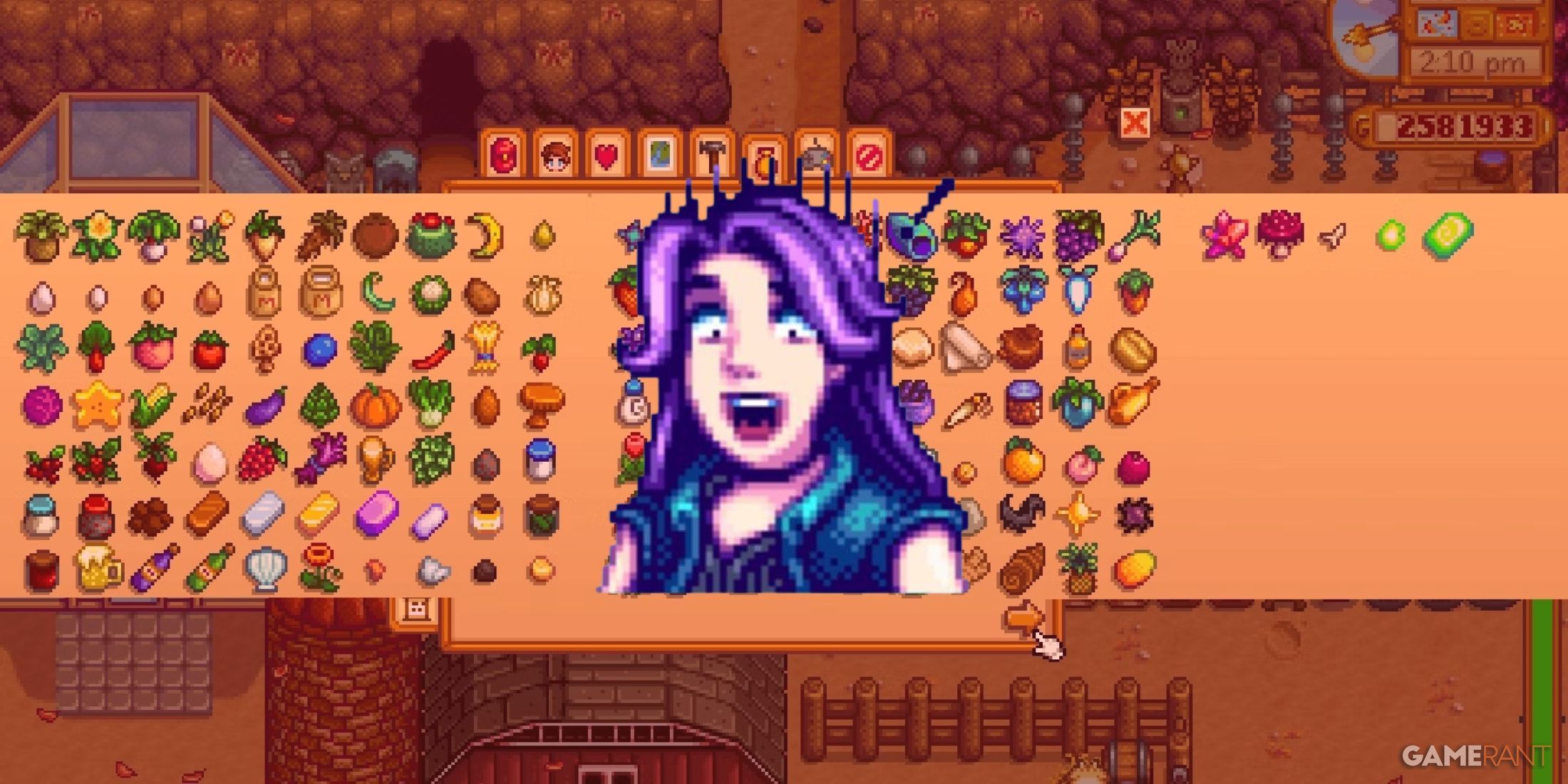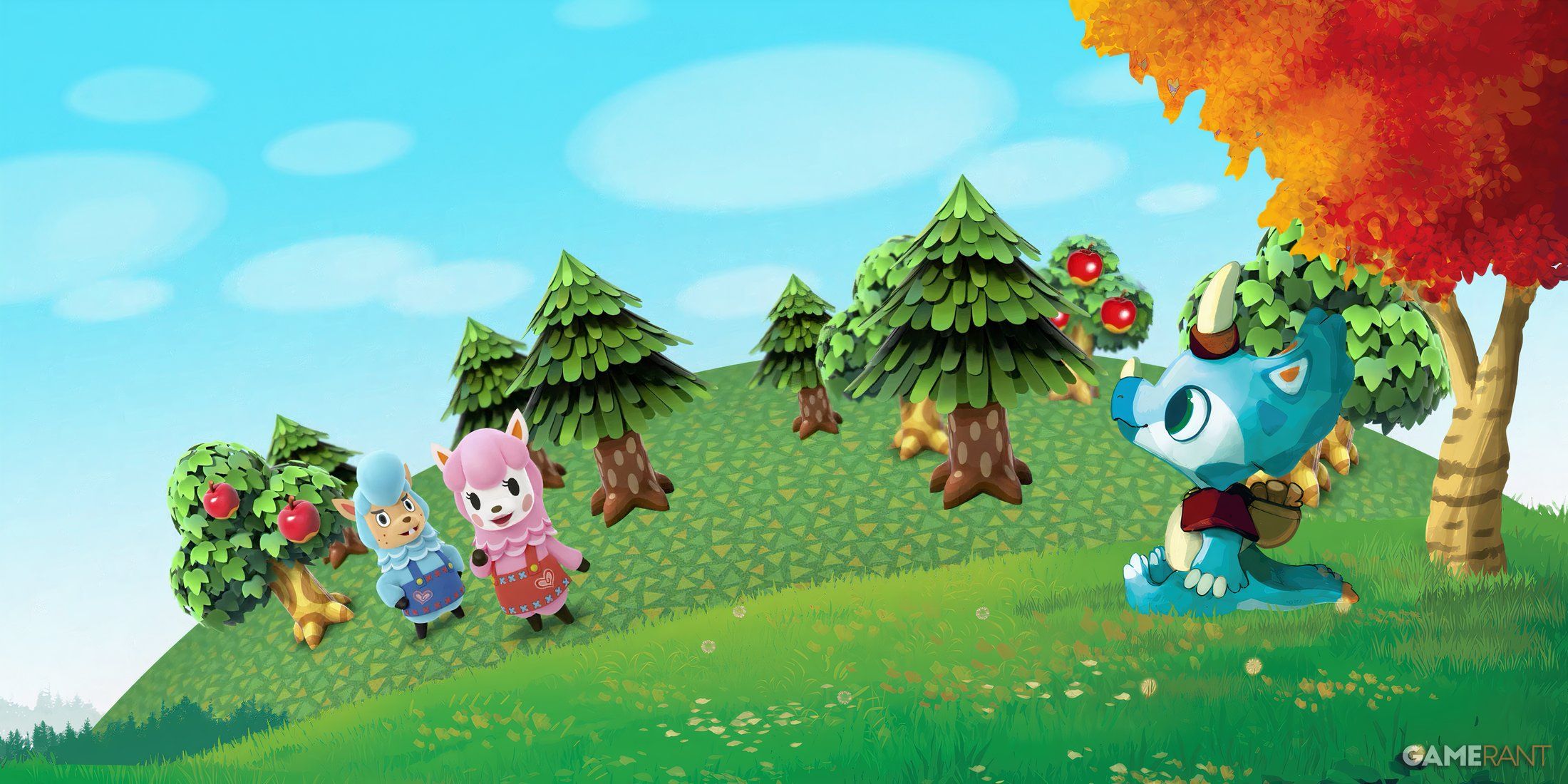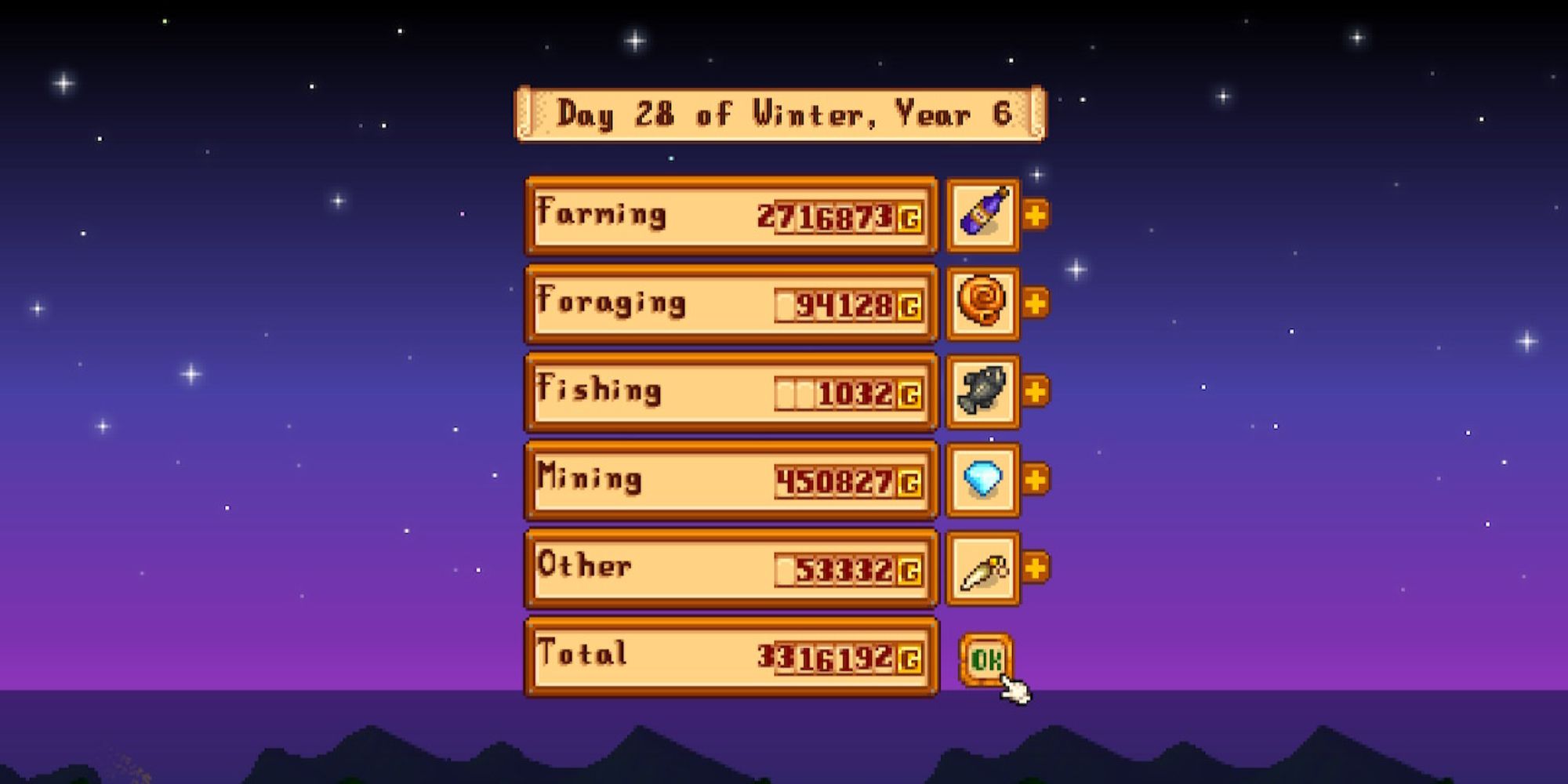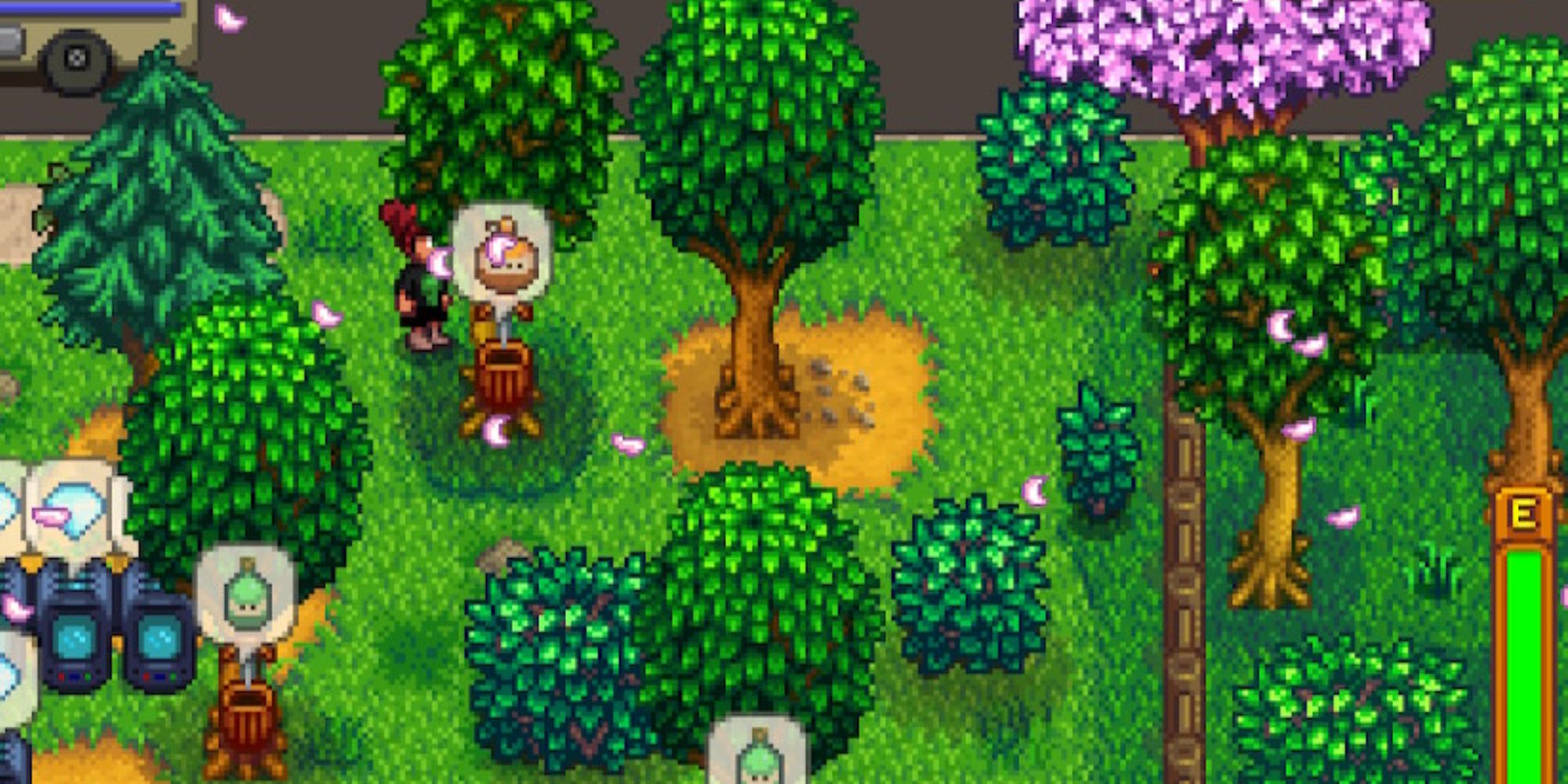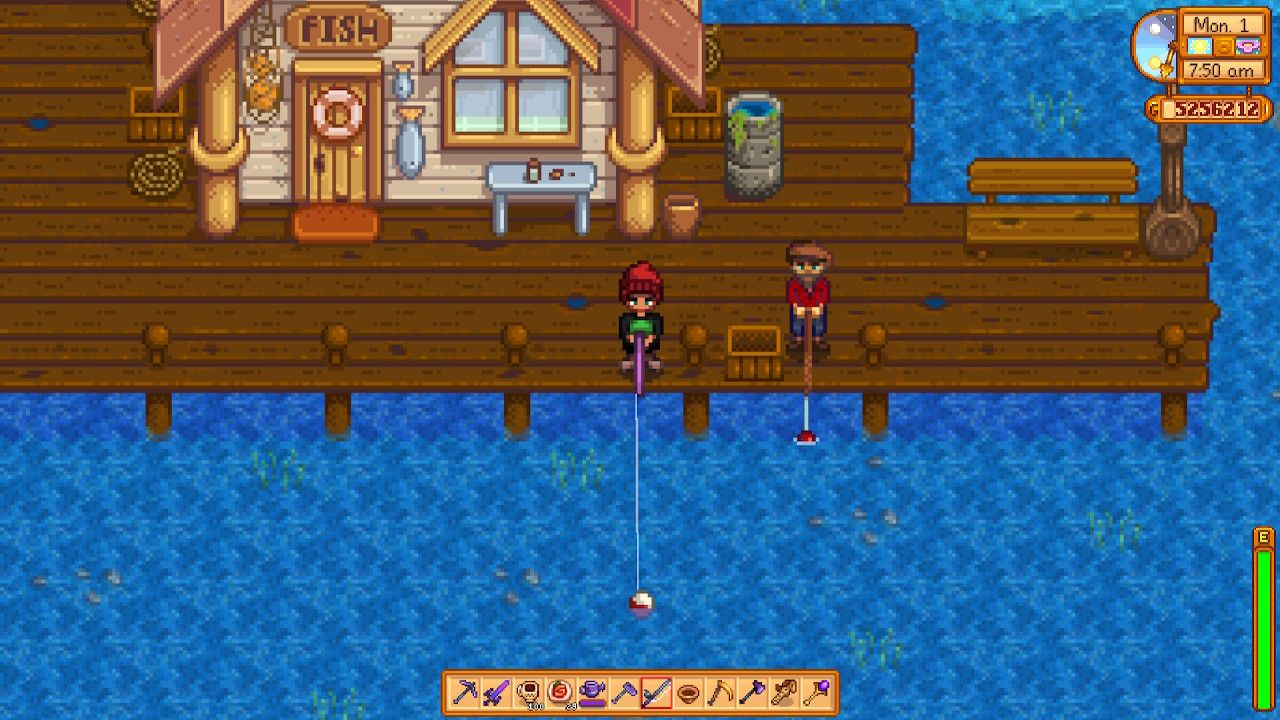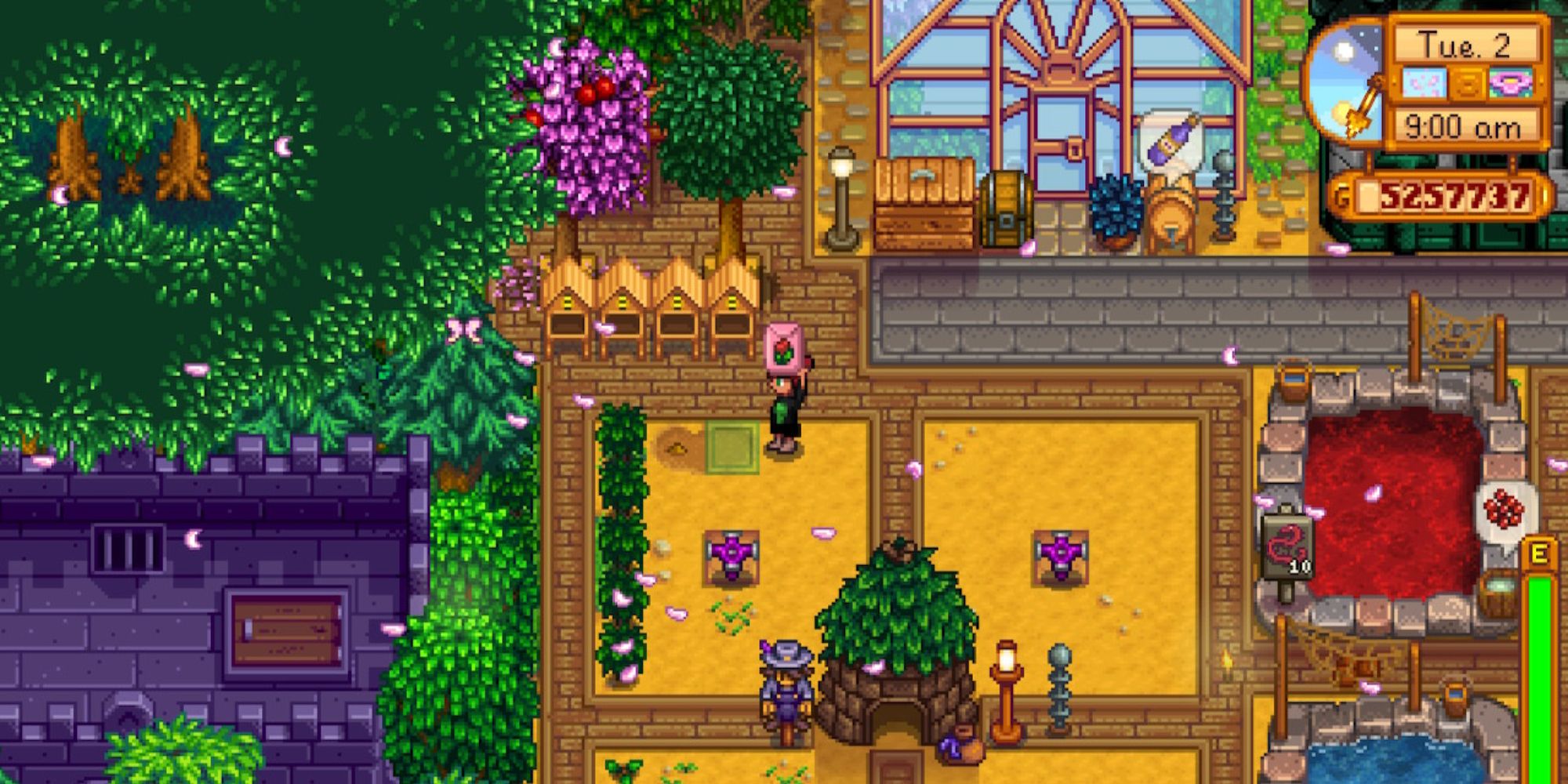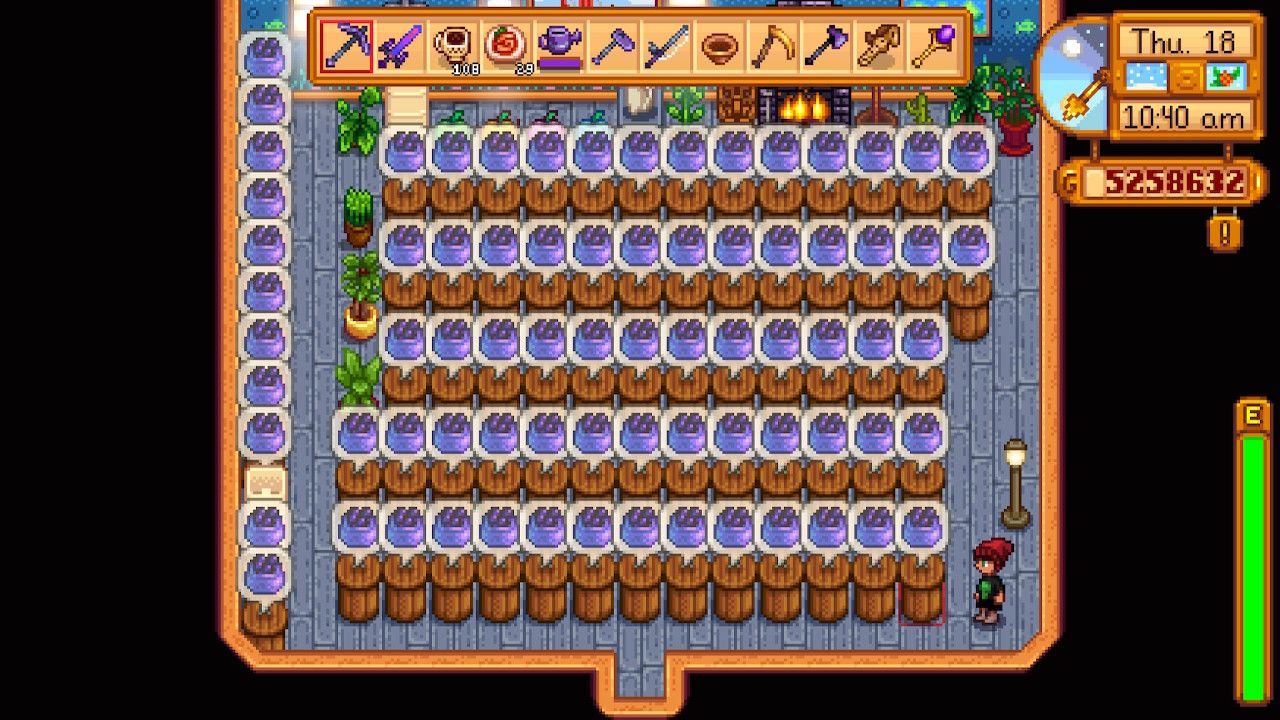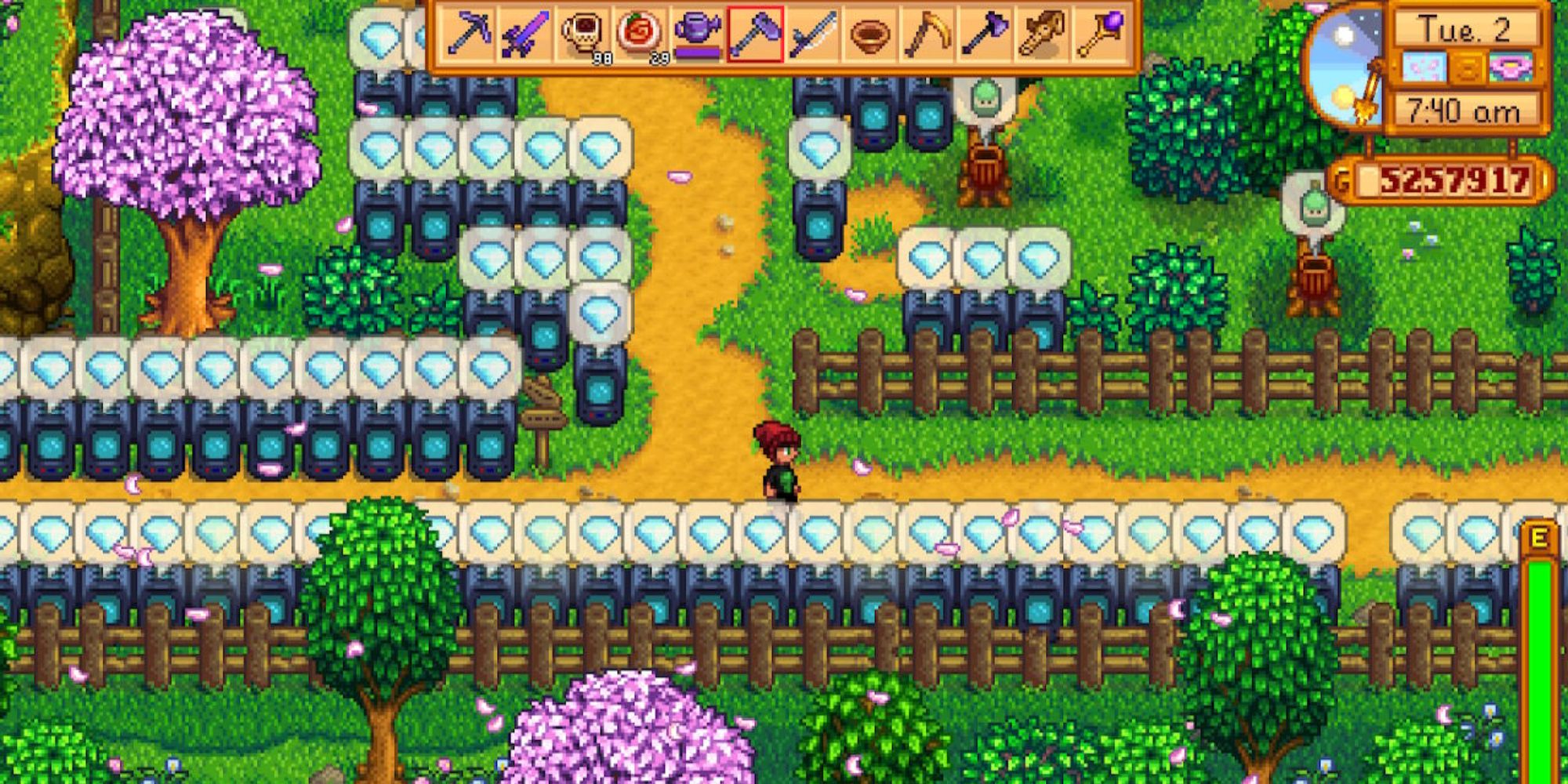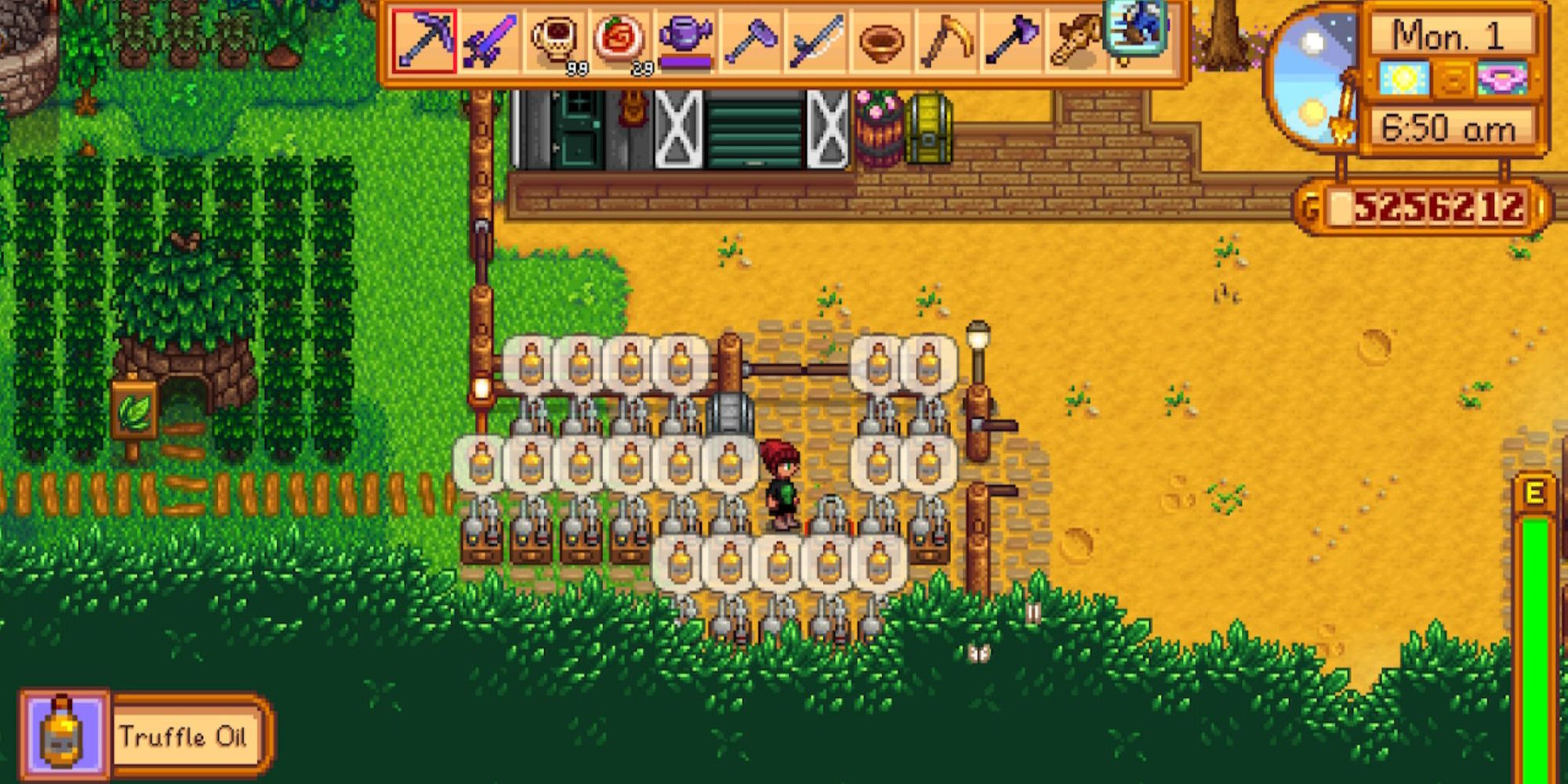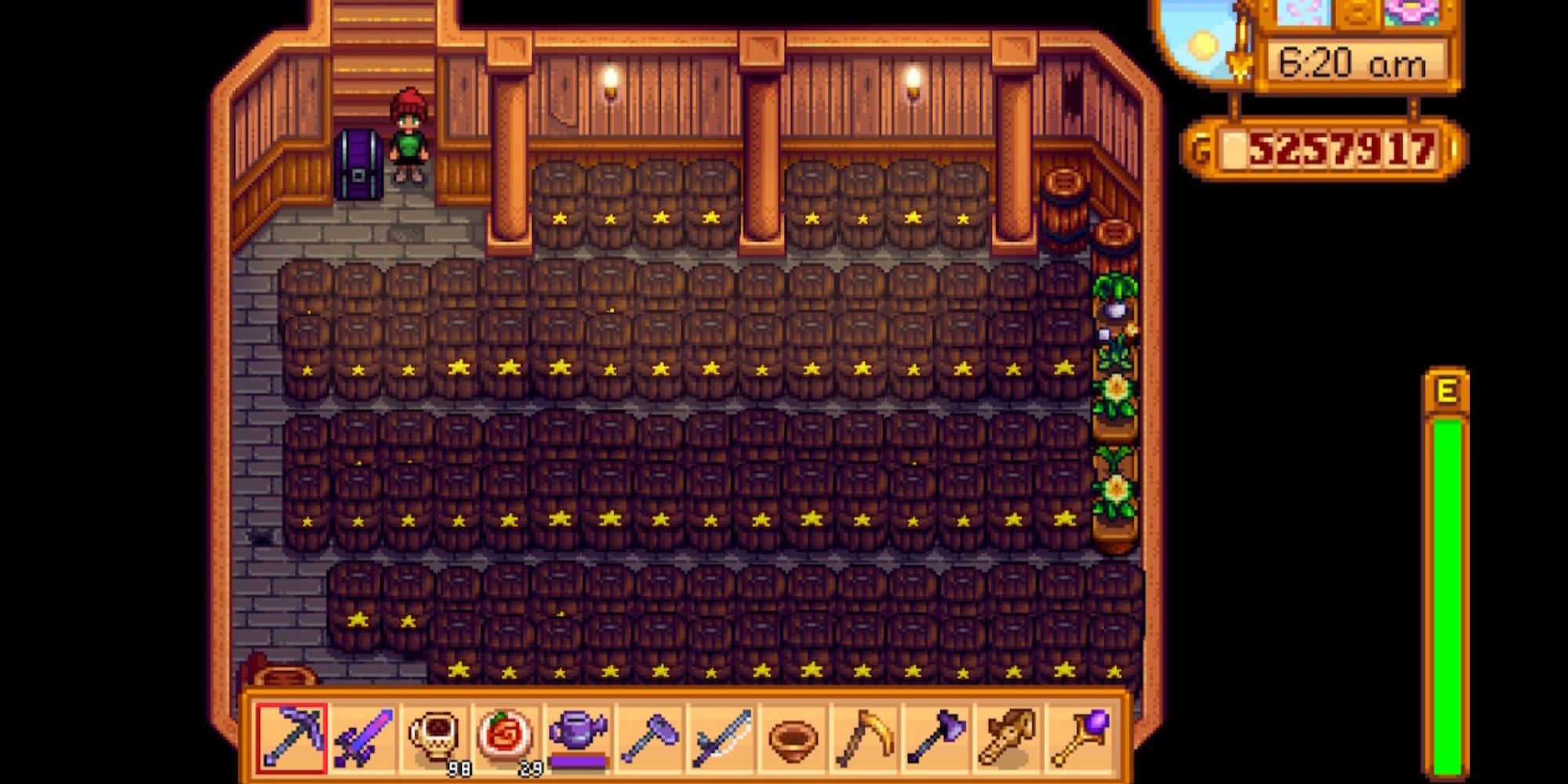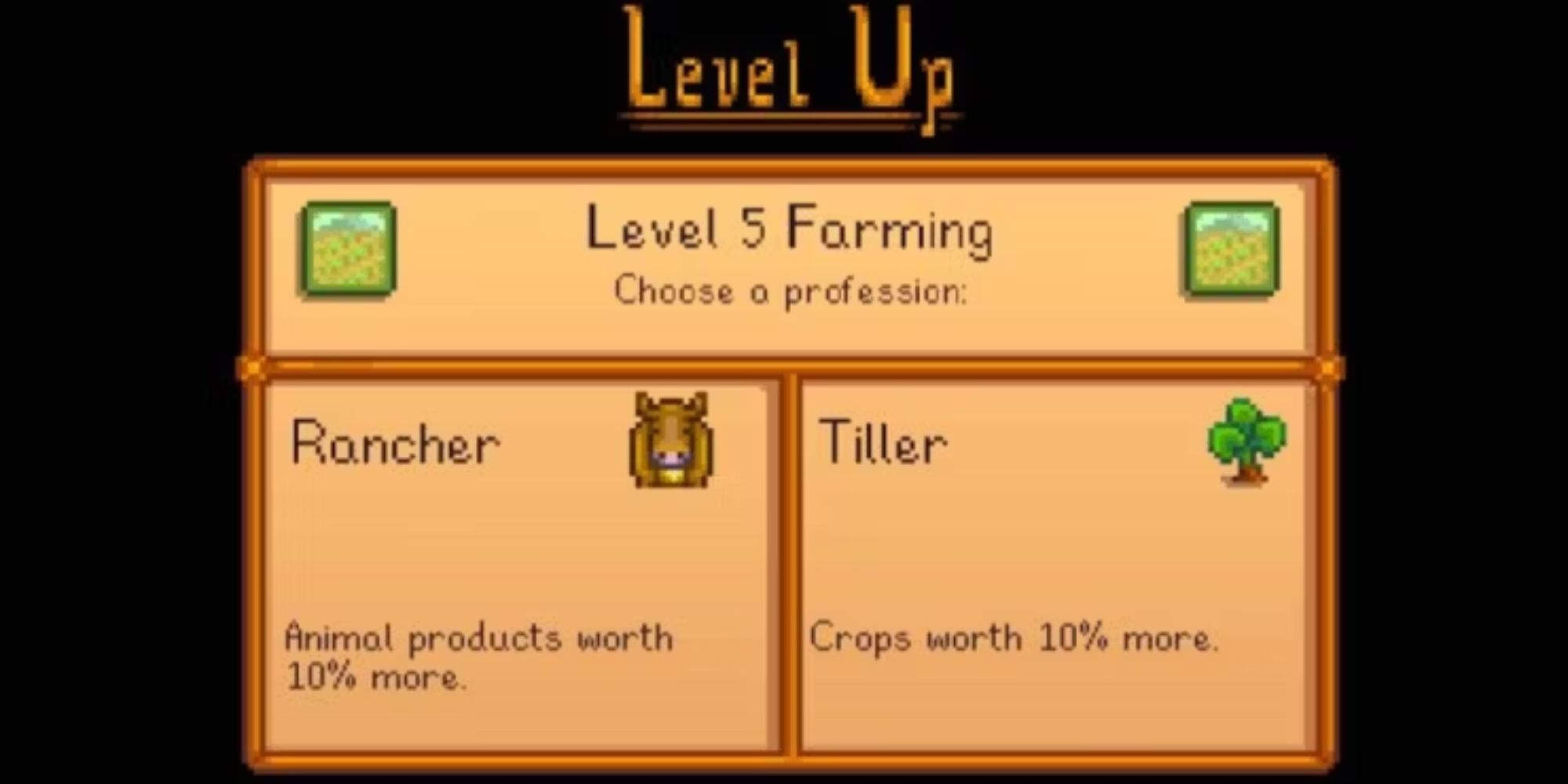Everyone knows that farming comes first in Stardew Valley, but it's far from the only way to make good money. There are many other activities in the game, some of which can really rake in the cash.
However, the other methods of gaining a lot of gold in Stardew Valley are not as obvious as farming. Many of these other money-making tips are most useful in the Winter when players cannot depend as much on their crops. However, they should not be ignored in other seasons. A lot of these activities are worth a farmer's time if they want to be rolling in gold.
Beginners looking to make a decent salary in the early days (before many of these options come available) should check out our guide to making money in the first year, listed here:
Updated November 5, 2022 by the Game ZXC team: Thanks to those who pointed out the ways this article could be improved. We've rewritten most of it to keep it up-to-date and in line with our current standards. Good luck out there, farmers!
8 Use Tappers for Kegs and Other Machinery
Tappers are small objects placed on trees to produce various products, including Maple Syrup, Oak Resin, and Pine Tar. While these items are not that profitable on their own, they're necessary for making Kegs (Oak Resin) and other machines. Kegs help make Wine and Juice, which are some of the most profitable items in the game. They are also needed to make Mead, two profitable artisan goods that you can make without growing crops.
Unfortunately, building a substantial number of Kegs can be annoying because Oak Resin can be hard to farm. While wood, stone, and other basic resources are farmed all the time, tapping trees is not as immediately obvious, especially for newer players. By ensuring enough Tappers are made and used early on, farmers can build up quite the supply and build Kegs to their heart's content.
Additionally, Maple Syrup can be used to make Bee Houses, and Pine Tar can be used to craft Looms, both of which can also make more artisan goods for a decent chunk of change.
You can tap the trees at the Bus Stop!
7 Fish For The Big Catch
Not all fish are best for selling raw, but some are certainly worth catching. Catfish are popular to sell raw and can be caught in Spring and Fall during rain. They can sell for between 200 and 300 gold. Fish in the mines also sell for a pretty penny, such as Ice Pips and Lava Eels. Of course, the Legendary Fish sell for thousands, but there is only one of each. Even when fish don't sell for much on their own, some dishes that use fish can be worth a lot.
In fact, some of the best fishing rewards are not even the fish themselves. While reeling one in, players have the chance to fish up treasure chests. These can have common items, but also incredibly rare ones such as Dinosaur Eggs and Prismatic Shards.
Fishing isn't easy, especially early in the game when players have a bad fishing pole. It's possible to eat food that boosts the Fishing skill to make the task a bit more manageable, and Willy also sells a bunch of add-ons to fishing poles that are extremely useful. However, if that still doesn't help enough, Crab Pots are a great alternative that still makes a decent income.
Some fish aren't worth much, but by turning them into Sashimi, they will pull in a bit more money. It's a small increase, but it's better than nothing. Sashimi sells for 75g, so any fish worth less than that should be turned into Sashimi or used in Help Wanted quests.
The ever-reliable Stardew Valley official wiki has a chart that outlines which fish should be Sashimi-ified.
6 Use Bee Houses (and Make Flower Honey)
Honey isn't the most profitable item in the game, but it's pretty decent, and it takes basically no effort to make. Simply craft some Bee Houses and set them somewhere. They'll generate Honey over time passively. A Bee House can be made from 40 Wood, 8 Coal, an Iron Bar, and a Maple Syrup starting at Farming Level 3.
Though this guide is about money-making methods other than growing crops, it's extremely profitable to plant a single flower near the Bee Houses. If the flower is grown when the Honey is harvested, it'll flavor the Honey, increasing its profit. Honey on its own sells for 100g, but Fairy Rose Honey (the most profitable) jumps up to a tidy 680g. With the Artisan Profession, that increases to 952g!
5 Make Caviar
One of the newer features introduced into Stardew Valley is Fish Ponds. This allows players to keep their choice of fish in a controlled environment and gather Roe from them. Roe can then be placed into Preserves Jars, which turn it into Aged Roe. This artisan good is decently profitable on its own, but the big bucks come from making Caviar.
This expensive artisan good is made the same way as Aged Roe, by placing Roe into a Preserves Jar. However, only Sturgeon Roe will turn into Caviar. Stocking a Fish Pond with Sturgeon will produce a steady supply of their Roe, which, when turned into Caviar, will net a tidy 500g without the Artisan Profession, and 700g with it.
4 Put Gems in Crystalariums
Crystaliariums are a machine built from 99 Stone, 5 Gold Bars, 2 Iridium Bars, and a Battery Pack. The recipe unlocks at Mining Level 9.
These machines duplicate any gem placed inside indefinitely (the time taken is based on the gem chosen). With this process, players can endlessly reproduce gems and sell them for a hefty profit.
One of the best choices is Diamonds, which sell for 750g, though they do take five whole days to duplicate in a Crystalarium. However, they sell for 975g with the Gemologist Profession, making them one of the most expensive items in the game.
Unfortunately, Prismatic Shards cannot be placed into a Crystalarium.
3 Make Artisan Goods
Speaking of the Artisan Profession, artisan goods are extremely, extremely profitable. Almost all of them seriously boost the sell price from a product's base selling price. While many crops can be turned into artisan goods, animal products and other items should not be ignored, either.
It can be difficult to process every single thing into artisan goods, because that takes a lot of machines. But, it is recommended to turn as many Eggs, batches of Milk, Truffles, and other processable goods into artisan goods, as they'll be much more profitable.
Artisan goods that aren't made from crops are listed here:
Base Item | Made by: | Machine | Artisan Good | Base Sell Price | ||
|---|---|---|---|---|---|---|
Egg | Chickens (white, brown, or blue) | + | Mayonnaise Machine | = | Mayonnaise | 190g |
Large Egg | Chickens (white, brown, or blue) | + | Mayonnaise Machine | = | Mayonnaise (with quality star) | 237g (silver), 285g (gold), 380g (iridium) |
Ostrich Egg | Ostriches | + | Mayonnaise Machine | = | 10x Mayonnaise | 1,900g (190g x 3) |
Golden Egg | Golden Chickens | + | Mayonnaise Machine | = | 3x Gold-quality Mayonnaise | 855g (285 x 3) |
Milk | Cows (white or brown) | + | Cheese Press | = | Cheese | 230g |
Large Milk | Cows | + | Cheese Press | = | Gold-quality Cheese | 345g |
Goat Milk | Goats | + | Cheese Press | = | Goat Cheese | 400g |
Large Goat Milk | Goats | + | Cheese Press | = | Gold-quality Gold Cheese | 600g |
Duck Egg | Ducks | + | Mayonnaise Machine | = | Duck Mayonnaise | 375g |
Void Egg | Void Chickens | + | Mayonnaise Machine | = | Void Mayonnaise | 275g |
Dinosaur Egg | Dinosaurs | + | Mayonnaise Machine | = | Dinosaur Mayonnaise | 800g |
Truffle | Pigs | + | Oil Maker | = | Truffle Oil | 1,065g |
Wool | Rabbits, Sheep | + | Loom | = | Cloth | 470g |
Honey | Bee Houses | + | Keg | = | Mead | 200g |
Roe | Fish in Fish Ponds | + | Preserves Jar | = | Aged Roe | 2x Roe's base price |
Sturgeon Roe | Sturgeon in Fish Ponds | + | Preserves Jar | = | Caviar | 500g |
While most Wine, Juice, Pickles, and Jelly are made from crops, you can make them without ever growing a crop. Many forageables can be placed into Kegs or Preserves Jars to make these items, too.
Truffles can be one of the most efficient items for making a gigantic fortune via artisan goods. Truffles are dug up by Pigs that are allowed outside (they won't go outside in Winter or when it rains). It's not uncommon for Pigs to find more than one Truffle per day, and they can be turned into Truffle Oil , which sells for a massive profit of 1,065g. Even when not turned into Truffle Oil, Truffles themselves sell for 625g at base quality.
Add in the right Professions, and entire empires can be built on Truffle Oil. The Artisan Profession alone bumps the price of Truffle Oil up to 1,491g per batch. On top of this, Truffles are considered a foraged good, meaning the Gatherer Profession gives a 20% chance of double harvest of them, and Botanist ensures they're always Iridum quality. Iridium quality Truffles that aren't processed into Truffle Oil sell for a whopping 1,250g!
The crafting recipe for an Oil Maker is learned at Farming Level 8. Making one takes 50 Slime, 20 Hardwood, and a Gold Bar.
2 Age Wine in Casks
Wine is already one of the most profitable things to make in the entire game. However, it's a wise idea to throw a bunch of it in Casks to age up and sell for even more.
Casks can only be placed in the Farmhouse basement, which is the final upgrade available from Robin's Carpenter Shop. Casks are used to raise the quality of some artisan goods, including Cheese, Goat Cheese, Wine, Mead, Pale Ale, and Beer. Each of these goods takes a different amount of time to rise in quality, with Wine, unfortunately, being the longest at 56 days to reach Iridium quality. However, Iridium-quality Wine sells double what it would with no quality star.
For those looking to really avoid growing crops for profit, it's also extremely worthwhile to place Cheese and Goat Cheese in Casks before selling it. While Ancient Fruit Wine and Starfruit Wine have the highest gold-per-day ratio from Casks, Cheese and Goat Cheese are the next to follow. The time taken is shorter, too. Both types of Cheese take only 14 days to reach Iridium Quality. At this level, they sell for double their base price, meaning Cheese now sells for 460g and Goat Cheese for 800g, even without the Artisan Profession.
1 Choose the Right Professions
We've mentioned some Professions throughout this article, and that's because they really shouldn't be underestimated when building your empire. The right Profession choice can supercharge the profits earned on the farm, with some of them being much better than others.
Some of the best choices for Professions when trying to make money from methods that aren't crop-growing are as follows:
> Gatherer: This is a choice at Foraging Level 5. With this Profession, there's a 20% chance of double-harvest on foraged goods. As mentioned above, this includes the mighty Truffles.
> Botanist: This is a choice at Foraging Level 10 if Gatherer was chosen. This Profession makes all foraged goods their highest quality. Again, this applies to Truffles, making a single one worth 1,250g.
> Artisan: This is a choice at Farming Level 10 if Tiller was chosen at Level 5. The Artisan Profession is easily one of the best in the entire game, increasing the sale price of artisan goods by 40%. A bottle of base-quality Ancient Fruit Wine, for example, sells for 3,150g, compared to 2,250g without the Artisan Profession.
> Gemologist: This is a choice at Mining Level 10 if Geologist was chosen at Level 5. This Profession increases the price of all gems by 30%. This Profession is absolutely killer when paired with Crystalariums.
> Fisher (Level 5 Fishing) and Angler (Level 10): These Professions boost the sale price of fish. The first, Fisher, boosts the sale price of fish by 25%, while Angler boosts it by 50%. While these, unfortunately, do not stack, they do increase the value of the fish you catch immensely.
> Pirate: If you chose Fisher at Level 5 Fishing, you'll be able to choose between the aforementioned Angler Profession or Pirate. While Angler is more consistently profitable, Pirate can also be pretty great if you're lucky. This Profession doubles the chance of finding treasure when fishing, which can include some pretty expensive finds.

